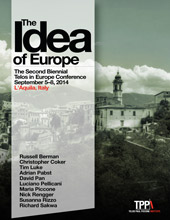The following paper was presented at the conference “After the End of Revolution: Constitutional Order amid the Crisis of Democracy,” co-organized by the Telos-Paul Piccone Institute and the National Research University Higher School of Economics, September 1–2, 2017, Moscow. For additional details about the conference as well as other upcoming events, please visit the Telos-Paul Piccone Institute website.
Russia will have many futures because it has had many pasts. Three aspects in particular stand out in any discussion of Russia’s future. The first is what Marxists used to call the “present political conjuncture.” In other words, the fate of Russia is inextricably linked with the broader developments in global political practices. It is within this framework that one needs to consider the “post-revolutionary” character of Russia. Mikhail Gorbachev’s perestroika (restructuring) began in 1985 soon after his accession to the Soviet leadership, but the great ebb tide of emancipatory socialism had begun long before. The post-war Keynesian and welfare state consensus had already begun to unravel with the end of the long post-war economic boom in 1970 and the move to flexible exchange rates in August 1971 as Richard Nixon moved away from the Bretton Woods system of pegging the dollar to gold. The 1970s saw the first moves toward financial liberalization, and Margaret Thatcher’s election in May 1979 signaled, as Eric Hobsbawm put it in September 1978 in a famous article in Marxism Today, that the “Forward March of Labour” was halted. The election of Ronald Reagan in November 1980 further indicated the beginning of an offensive against the ideology and geopolitics of revolutionary socialism. In its place the gathering wave of the neoliberal transformation of capitalism transformed the relationship of state to society, the character of work, and the understanding of citizenship in advanced capitalist societies.
 The Ukraine crisis reflected the continuation in new forms of what used to be called the East-West conflict. After the end of the Cold War in 1989–91, as a result of Mikhail Gorbachev’s attempt to reform the Soviet Union based on the ideas of the “new political thinking,” no inclusive and equitable peace system was established. Instead, an asymmetrical peace was imposed on Russia. The Soviet Union disintegrated in December 1991, and Russia emerged as the “continuer state,” assuming the burdens, treaty obligations, and nuclear responsibilities of the former USSR. As far as Russia was concerned, the end of the Cold War had been a shared victory: everyone stood to gain from the end of the division of Europe, symbolized by the fall of the Berlin Wall in November 1989. The institutions of the Cold War in the East were dismantled, above all the Warsaw Treaty Organization (the Warsaw Pact), but on the other side the organizations of the Cold War were extended, above all in the form of the North Atlantic Treaty Organization (NATO).
The Ukraine crisis reflected the continuation in new forms of what used to be called the East-West conflict. After the end of the Cold War in 1989–91, as a result of Mikhail Gorbachev’s attempt to reform the Soviet Union based on the ideas of the “new political thinking,” no inclusive and equitable peace system was established. Instead, an asymmetrical peace was imposed on Russia. The Soviet Union disintegrated in December 1991, and Russia emerged as the “continuer state,” assuming the burdens, treaty obligations, and nuclear responsibilities of the former USSR. As far as Russia was concerned, the end of the Cold War had been a shared victory: everyone stood to gain from the end of the division of Europe, symbolized by the fall of the Berlin Wall in November 1989. The institutions of the Cold War in the East were dismantled, above all the Warsaw Treaty Organization (the Warsaw Pact), but on the other side the organizations of the Cold War were extended, above all in the form of the North Atlantic Treaty Organization (NATO). 






